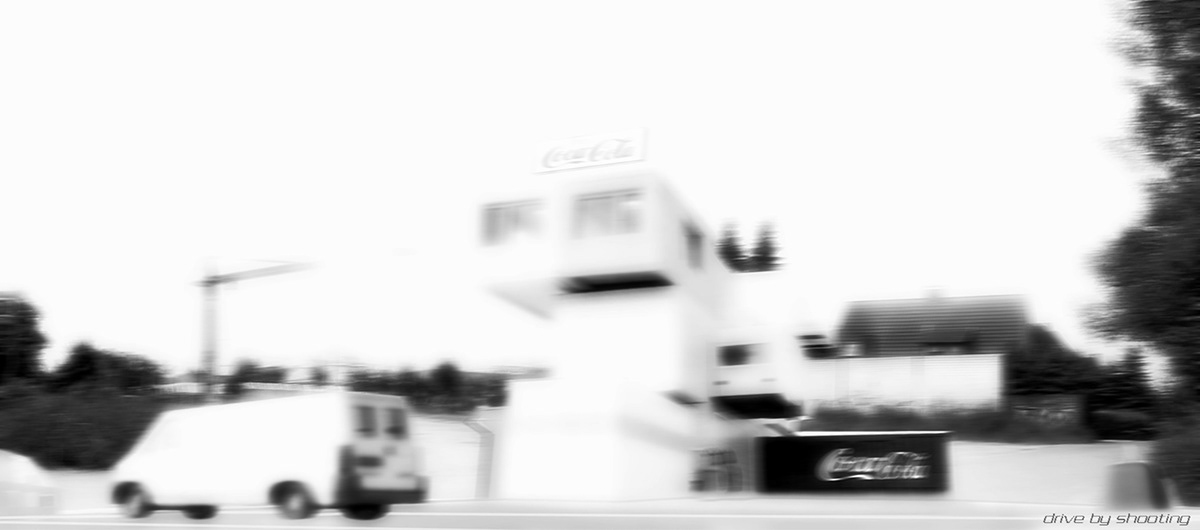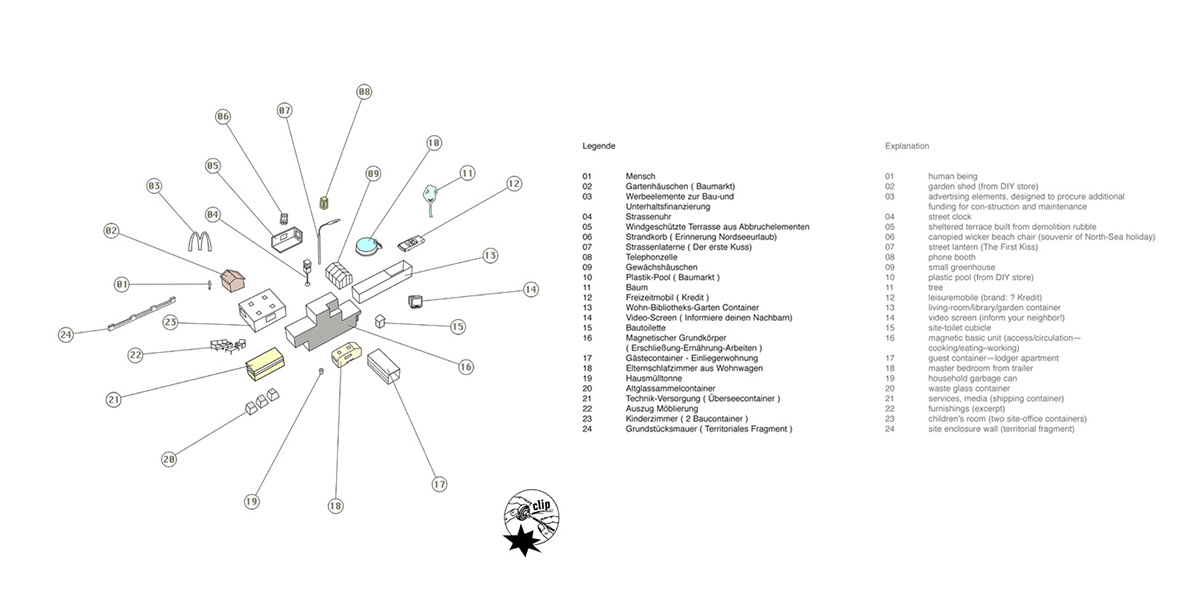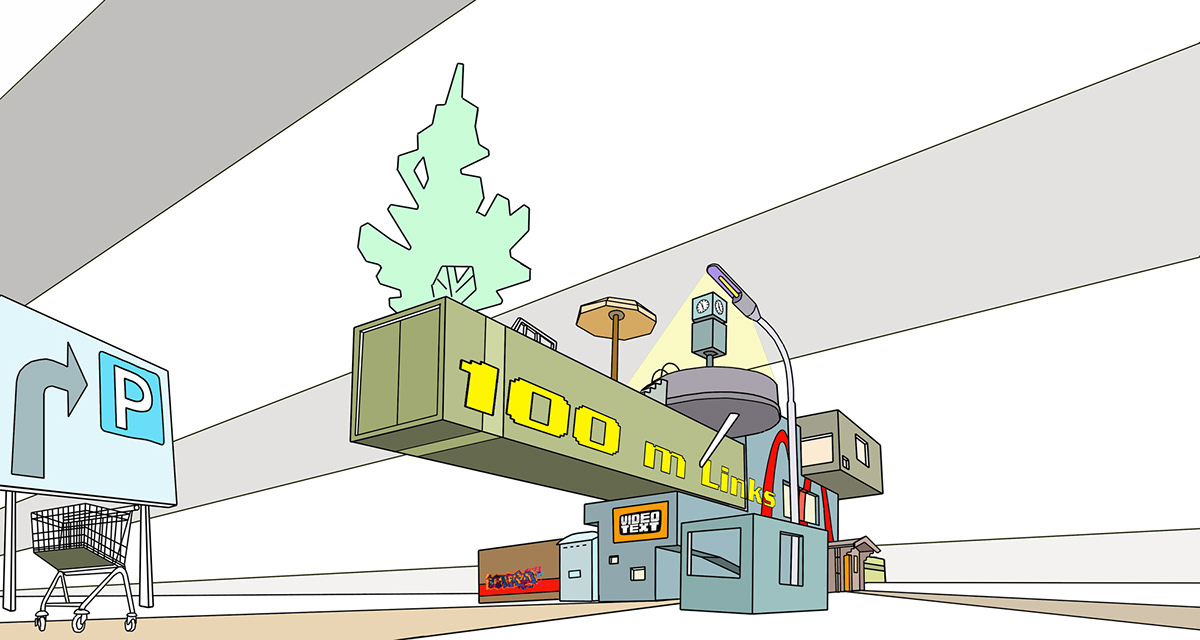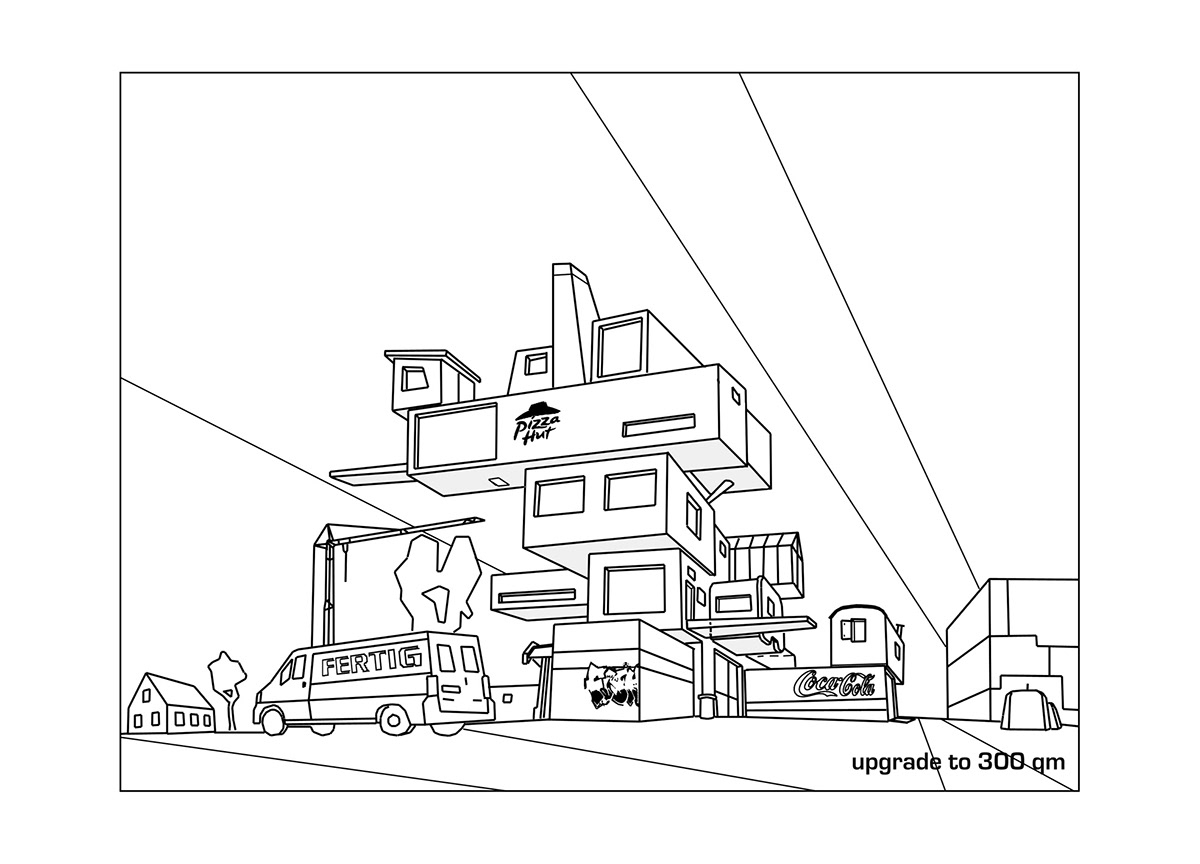Contemporary House
Haus der Gegenwart
Competition 2001
Süddeutsche Zeitung & Neue Sammlung München
Haus der Gegenwart
Competition 2001
Süddeutsche Zeitung & Neue Sammlung München
The Concept of Contemporaneity
What is the contemporary house? How are we to define Central Europe?
Is beauty really the contemporary, perhaps even ubiquitous expression for the architecture that surrounds us every day of our lives?
These questions can only be answered rashly. The search for contemporary building principles and concepts could be more promising.
What exactly determines our treatment of space? How exactly is space repre-sented?
One of the actually extant events of vernacular building rituals is the principle of agglomeration or clustering.
Is this house beautiful because it is genuine?
The principle of agglomeration.
I do not want to join in the general ‘song and dance’ about the loss of place. Things are as they are. Neither good nor bad. All identifiable places are still places. They are—and are therefore good.
Somehow I feel dizzy from Helmut Wilkes’ ‘Atopic Society’ and Richard Münch’s
supposition that places and spaces are instruments of power. I prefer to respond to Rudolf Stichweh’s call for more detailed studies of locality and globality with their respective processual relationships.
Amazed and excessively observant, in an almost phenomenologically searching spirit, I move to the platform of everyday space, of the territorial anchoring of our daily rituals and routines.
We are obviously destined to be collectors. The change from the hunter and gatherer to the farmer and herder is not yet complete, as we daily go and hunt for things.
‘Ordered lives, harmony, stacks of linen in the cupboard, lavender between the sheets.’
Colette Wartz.
Supermarkets, DIY stores and vacation places are the preferred destinations of our forays. We enrich our houses and gardens with the most bizarre objects and articles from the DIY store—in an act of identification with our otherwise neutral homes built by others.
Or else we directly procure all the necessary materials from the DIY supermar-ket—provided we possess a certain measure of technical skills.
Here, in the DIY store, we find all the doors and architectural elements we liked so much in Spain or Italy where we spent our last vacation. We now use them to refine our Prussian row.
Or else we bring home souvenirs from every trip. We arrange them on our shelves and pin postcards on our walls, thus introducing the wide world into our private homes. Which makes the world less foreign and more
‘homely’ and familiar.
The house as the container of life lived, of experiences, hopes and wishes. Here, inside, the world is gathering. The interior space draws its substance only from the relationships with objects and experiences. In here is a safe place.
‘…, the house cares for the dreamer; the house allows us to dream in peace.’
Gaston Bachelard
And if the safe place offers space for putting up the wall of cupboards, it is perfect. Who else but the architect still talks about space? Spatial experience has to be studied. We lower the
ceiling in order to avoid that.
What counts, in the final analysis, is the opportunity of managing one’s daily routines within an existing environment. Let’s be honest, after all, we already have everything under the sun, and we can live anywhere (inside), can’t we?
Power
‘And I create myself with one stroke of the pen. Lord of the world. Unlimited man.’
Pierre Albert-Birot
Our capacity to change, arrange and add up existing objects gives us the credible illusion that we have power over our living environment. In this sense, space means the transformation of an existing situation into a useful ‘here and now’. This game is a good one.
Magnetism
‘Magnetism is created by pressure from dark matter. It is therefore the ‘force’ that is the unified cause of all ‘forces’.
Things attract other things. Where there is a small heap of rubbish, it will most certainly grow x-fold in the next few hours. Houses attract people. Streets attract cars. Walls attract paints. Tables attract vases, and cars in turn attract people. Agglomerations.
It seems there is a principle of object attractions, a kind of magnetism of things—dark matter. This is an authentic principle inherent in nature.
It is now right amongst us. Everywhere.
Even in architecture. The principle of contemporaneity was the starting point for this project. It is the contemporary house. It permeates us. We are merely the tools of this law. But instead of moaning we should celebrate it because, in all the chaos which surrounds us, we have discovered it as a constant.
This constant may be fun, may it not? But perhaps we also dismiss it, shake it off as damnable. Perhaps it is indeed damnable, but it is real. Today. At the present time. Now.
What is the contemporary house? How are we to define Central Europe?
Is beauty really the contemporary, perhaps even ubiquitous expression for the architecture that surrounds us every day of our lives?
These questions can only be answered rashly. The search for contemporary building principles and concepts could be more promising.
What exactly determines our treatment of space? How exactly is space repre-sented?
One of the actually extant events of vernacular building rituals is the principle of agglomeration or clustering.
Is this house beautiful because it is genuine?
The principle of agglomeration.
I do not want to join in the general ‘song and dance’ about the loss of place. Things are as they are. Neither good nor bad. All identifiable places are still places. They are—and are therefore good.
Somehow I feel dizzy from Helmut Wilkes’ ‘Atopic Society’ and Richard Münch’s
supposition that places and spaces are instruments of power. I prefer to respond to Rudolf Stichweh’s call for more detailed studies of locality and globality with their respective processual relationships.
Amazed and excessively observant, in an almost phenomenologically searching spirit, I move to the platform of everyday space, of the territorial anchoring of our daily rituals and routines.
We are obviously destined to be collectors. The change from the hunter and gatherer to the farmer and herder is not yet complete, as we daily go and hunt for things.
‘Ordered lives, harmony, stacks of linen in the cupboard, lavender between the sheets.’
Colette Wartz.
Supermarkets, DIY stores and vacation places are the preferred destinations of our forays. We enrich our houses and gardens with the most bizarre objects and articles from the DIY store—in an act of identification with our otherwise neutral homes built by others.
Or else we directly procure all the necessary materials from the DIY supermar-ket—provided we possess a certain measure of technical skills.
Here, in the DIY store, we find all the doors and architectural elements we liked so much in Spain or Italy where we spent our last vacation. We now use them to refine our Prussian row.
Or else we bring home souvenirs from every trip. We arrange them on our shelves and pin postcards on our walls, thus introducing the wide world into our private homes. Which makes the world less foreign and more
‘homely’ and familiar.
The house as the container of life lived, of experiences, hopes and wishes. Here, inside, the world is gathering. The interior space draws its substance only from the relationships with objects and experiences. In here is a safe place.
‘…, the house cares for the dreamer; the house allows us to dream in peace.’
Gaston Bachelard
And if the safe place offers space for putting up the wall of cupboards, it is perfect. Who else but the architect still talks about space? Spatial experience has to be studied. We lower the
ceiling in order to avoid that.
What counts, in the final analysis, is the opportunity of managing one’s daily routines within an existing environment. Let’s be honest, after all, we already have everything under the sun, and we can live anywhere (inside), can’t we?
Power
‘And I create myself with one stroke of the pen. Lord of the world. Unlimited man.’
Pierre Albert-Birot
Our capacity to change, arrange and add up existing objects gives us the credible illusion that we have power over our living environment. In this sense, space means the transformation of an existing situation into a useful ‘here and now’. This game is a good one.
Magnetism
‘Magnetism is created by pressure from dark matter. It is therefore the ‘force’ that is the unified cause of all ‘forces’.
Things attract other things. Where there is a small heap of rubbish, it will most certainly grow x-fold in the next few hours. Houses attract people. Streets attract cars. Walls attract paints. Tables attract vases, and cars in turn attract people. Agglomerations.
It seems there is a principle of object attractions, a kind of magnetism of things—dark matter. This is an authentic principle inherent in nature.
It is now right amongst us. Everywhere.
Even in architecture. The principle of contemporaneity was the starting point for this project. It is the contemporary house. It permeates us. We are merely the tools of this law. But instead of moaning we should celebrate it because, in all the chaos which surrounds us, we have discovered it as a constant.
This constant may be fun, may it not? But perhaps we also dismiss it, shake it off as damnable. Perhaps it is indeed damnable, but it is real. Today. At the present time. Now.












